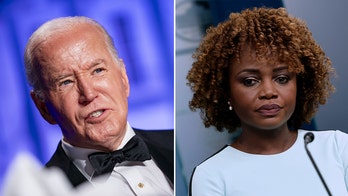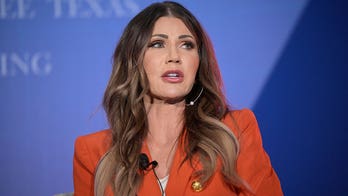
President Donald Trump speaks on Capitol Hill in Washington, Tuesday, April 25, 2017, during the United States Holocaust Memorial Museum's National Days of Remembrance ceremony. (AP Photo/Carolyn Kaster) (The Associated Press)
The media often portray the Trump White House as being in a state of chaos. And sometimes the Trump team provides ample fodder for that.
But there are other times where the press just is out of sync with the president’s unorthodox style.
As a dealmaker schooled in the rough world of New York real estate, the president often makes unrealistic demands, pulls back, issues threats, changes tactics—all in service of hammering out an agreement.
This is not how Washington, with its culture of cautious calibration, is accustomed to operating. Politicians issue statements that are carefully vetted and everything proceeds incrementally.
Donald Trump has Twitter.
A classic case unfolded with the reporting on NAFTA.
Trump has long bashed the free trade agreement with Canada and Mexico, pushed through during the Clinton administration, as a lousy deal for America. And when the AP interviewed him late last week, the president said: “I am going to either renegotiate it or I am going to terminate it.”
He didn’t make much news because it sounded like his usual spiel.
But things seemed to ratchet up quickly. On Wednesday, Politico reported:
“The Trump administration is considering an executive order on withdrawing the U.S. from NAFTA, according to two White House officials. A draft order has been submitted for the final stages of review and could be unveiled late this week or early next week, the officials said.”
And CNN had a similar report:
“The White House is considering withdrawing from NAFTA in the coming days, though President Donald Trump has not yet decided how to proceed, two senior administration officials confirmed to CNN Wednesday.”
That, my friends, is an orchestrated leak. And it was head-snapping: Withdrawing from NAFTA? Just like that? By executive order? Would Trump really go that far?
Reince Priebus was non-committal that evening on “Special Report.” “The president is talking about renegotiating NAFTA. I'm not going to get ahead of ourselves on where we're at on that,” he said.
The president called the other two leaders, Justin Trudeau and Enrique Pena Nieto, and the White House issued a statement late Wednesday night: “President Trump agreed not to terminate NAFTA at this time and the leaders agreed to proceed swiftly, according to their required internal procedures, to enable the negotiation of the NAFTA deal to the benefit of all three countries.”
Now some pundits might interpret this as lurching back and forth. But my take is that it was a deliberate strategy. And perhaps the media were used.
Hours before speaking to the leaders of Canada and Mexico, Trump sent a signal that he was thinking of unilaterally pulling out of the treaty.
“The prospect of the United States’ pulling out obviously alarmed the Canadian and Mexican leaders and prompted their calls to the White House,” the New York Times reported.
By yesterday, the president was telling reporters: “I decided rather than terminating NAFTA, which would be a pretty big, you know, shock to the system, we will renegotiate. Now, if I'm unable to make a fair deal, if I'm unable to make a fair deal for the United States, meaning a fair deal for our workers and our companies, I will terminate NAFTA.”
And that message will hover over the talks once they begin.
In negotiations, it doesn’t hurt to have the other side think you might do something crazy—even if that produces negative headlines.




